Name Gloria Richardson | ||
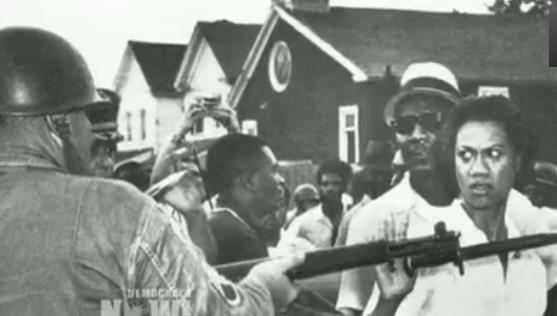 | ||
Civil rights pioneer gloria richardson 91 on how women were silenced at 1963 march on washington
Gloria Richardson Dandridge (born Gloria St. Clair Hayes, May 6, 1922) is best known as the leader of the Cambridge movement, a civil rights struggle in Cambridge, Maryland in the early 1960s. She was recognized as a major figure in the Civil Rights Movement at the time and was honored on the stage at the March on Washington for Jobs and Freedom.
Contents
- Civil rights pioneer gloria richardson 91 on how women were silenced at 1963 march on washington
- Gloria richardson looks back on the rift between malcolm x and march on washington organizers
- Early life
- Cambridge movement
- Later life
- References
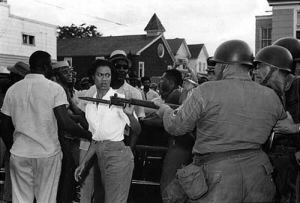
Gloria richardson looks back on the rift between malcolm x and march on washington organizers
Early life
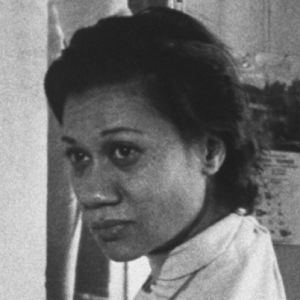
Gloria Richardson was born into the affluent St. Clair family, which owned successful grocery store, funeral home and extensive rental property had also produced one of Cambridge's two black city council members. Blacks could vote in Cambridge since the 1800's , but were secluded into one of five wards, the Second Ward but although within that ward blacks had a substantial religious and business communities that they themselves owned. had never been able to completely overturn Jim Crow laws. According to Richardson, one uncle after going tto Harvard law died in his early twenties when he contracted a major illness when the segregated local hospital would not treat him. Richardson earned a B.A. in sociology from Howard University in 1942. The city government would only hire black social workers to service the black clients in the all black ward . They hired another Black woman. and she focused on civic work and raising a family for over a decade.} In an interview with Robert Penn Warren for the book Who Speaks for the Negro?, Richardson comments that in Cambridge, blacks were "the last hired and first fired."
Cambridge movement

In 1961, a Freedom Ride came to Cambridge. The black city council member at that time attempted to discourage the campaign by insisting that the city was already desegregated. In contrast, Richardson and her college-age daughter Donna both responded to outreach by the Student Nonviolent Coordinating Committee (SNCC). At first Richardson rarely participated in civil disobedience, because she could not accept the original SNCC nonviolence regulations. Nonetheless, in 1962, she was asked and helped organize the Cambridge Nonviolent Action Committee, the first adult-led affiliate of SNCC, and became its official spokesperson.
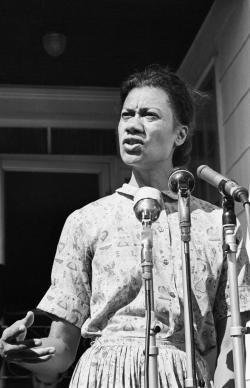
The Cambridge Movement began with black Cambridge residents sitting in at segregated movie theaters, bowling alleys and restaurants, but after a survey the movement evolved into a struggle for the economic rights of Cambridge citizens, many of whom were burdened with low wages and unemployment. The Cambridge Movement's focus on economic equality and its use of armed self-defense tactics have been cited as signaling the beginning of the Black Power phase of the civil rights movement.
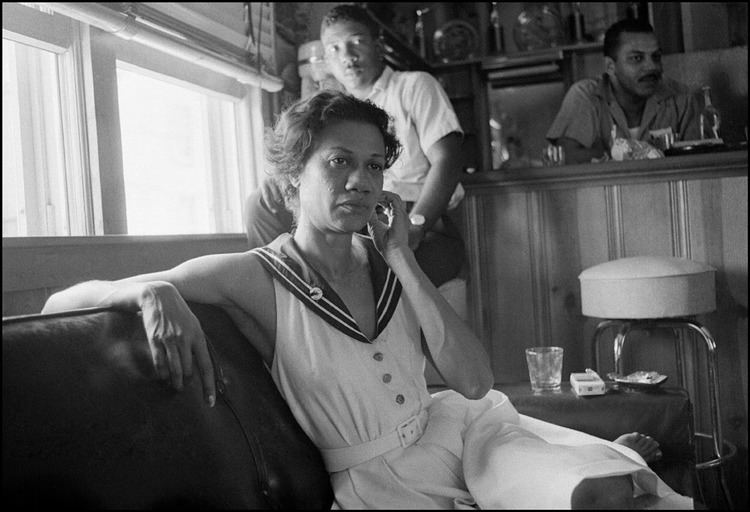
Richardson recalled that she had been a rebellious individual since childhood, but also situated herself as part of a community of militant African-American women: "I think I turned out like a lot of women in Cambridge...They did their cooking and ironing, but I don't remember them walking two steps behind anybody, and I think the men knew that. Later most of the members of our civil rights group were women...When we were attacked at demonstrations, they were the ones throwing stones back at the whites."

The Cambridge protests escalated into a major riot in June 1963. Governor J. Millard Tawes imposed martial law on Cambridge and sent in the National Guard. Robert F. Kennedy and other Justice Department and housing officials brokered a five-point "Treaty of Cambridge" that was signed in July in and bythe attorney general's office in Washington by the State Of Maryland ,local black leadership, including Richardson, and Cambridge officials.

By the autumn of 1963, black children were entering previously all-white schools, bus transportation was desegregated, the library and hospital were desegregated and a black policeman was promoted. In this period, Richardson rose to national prominence as a civil rights leader. She was saluted as one of the six "Negro Women Fighters for Freedom" featured on the stage of the March on Washington for Jobs and Freedom in August 1963. Like most of the other women that day, however, she was not permitted to address the crowd. Richardson was an inspiration to those seeking to radicalize SNCC, both in terms of her focus on economic security, and her challenging of nonviolent ideology.
A flare-up occurred in Cambridge in May 1964, when Richardson led a march protesting an appearance by segregationist George C. Wallace at the Fireman's Arena, a segregated ice-skating rink that had been the target of many of the original protests. However, in July 1964, President Johnson signed the historic Civil Rights Act, and the National Guard finally withdrew from Cambridge.
Later life
A month later, Richardson left Cambridge and married Frank Dandridge, a photographer she had become acquainted with during the demonstrations, and settled in New York City. She largely retired from public life, but continued to work with Harlem Youth Opportunities Unlimited, Associated Community Teams, and the New York City Department for the Aging.
